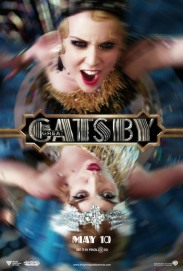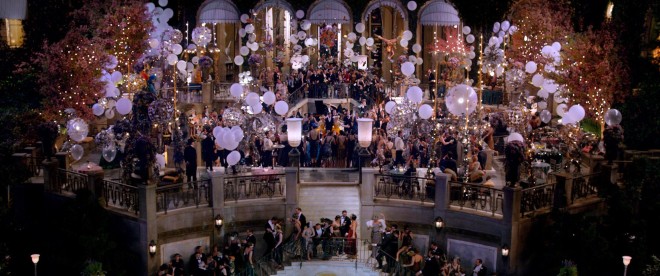Guest Post by Peter Langella
 When I first began writing seriously, I was just telling stories. I wasn’t thinking about plot or structure or the concrete and abstract desires of my characters. Sure, a lot of that found its way into my drafts, but it wasn’t my focus when I brainstormed or sat at the keyboard.
When I first began writing seriously, I was just telling stories. I wasn’t thinking about plot or structure or the concrete and abstract desires of my characters. Sure, a lot of that found its way into my drafts, but it wasn’t my focus when I brainstormed or sat at the keyboard.
That all changed when I become a writing student at Vermont College of Fine Arts. My faculty mentors and talented classmates made me question my intentions in every scene. Were my characters learning, failing, growing, or changing? Was my plot moving forward? Was I creating an emotional arc for my characters that future readers could connect with?
Because of questions like these (among the many other things I learned), I grew exponentially as a writer during my MFA experience. I’m now gaining confidence with my writing voice, and my drafting toolbox is larger and much more accessible.
However, the question I struggle with on a daily basis is the one about character emotions and reader connection. This literally keeps me up at night. Many, many nights. I used to think that I didn’t need to worry about a potential reader. Just be true to your characters, I’d tell myself. Write the story that needs to be written, I’d hear my past professors saying.
Just write the truth, for goodness sake!
 Then I watched Baz Luhrmann’s film adaptation of The Great Gatsby. I was blown away, specifically by his use of modern music in the 1920’s setting. By choosing a soundtrack that features Jay-Z, Jack White, Beyoncé, Florence & the Machine, and many other contemporary artists, Luhrmann isn’t only telling the characters’ stories, he is speaking directly to the audience.
Then I watched Baz Luhrmann’s film adaptation of The Great Gatsby. I was blown away, specifically by his use of modern music in the 1920’s setting. By choosing a soundtrack that features Jay-Z, Jack White, Beyoncé, Florence & the Machine, and many other contemporary artists, Luhrmann isn’t only telling the characters’ stories, he is speaking directly to the audience.
Now, I’m fully aware that Luhrmann’s music choices made most critics cringe, but I think it was extremely innovative, and similar choices can certainly be used by writers to make our books more relatable.
Seriously. I’m not crazy.
For example, during the first huge party that narrator Nick Carraway attends at Gatsby’s mansion, Luhrmann chooses to blare techno behind the visuals with vocals by Fergie and just a tiny hint of horns from the 1920’s. It’s jarring for the viewer, but it works because the character and viewer are experiencing the exact same thing. Nick Carraway has never heard music like this before, and he’s never been to a party so lavish. He’s completely out of his comfort zone. Viewers feel the same way. Most of us have never been to a party like that, either, and we’ve definitely never heard music like that paired with the visuals on the screen. We’re completely out of our comfort zone, too. If Luhrmann simply chose a jazz number new to Long Island that summer, Carraway would probably be feeling the same. He would still be blown away by the newness of the situation. But we wouldn’t be. We’d be thinking about the nice period piece we’re watching with timeless jazz music authentic to the era. We wouldn’t be feeling the exact same thing as the character, and the scene would be much less effective for that reason.

That’s what keeps me up at night. How can I – without the sounds and visuals that Luhrmann has at his disposal – create that exact connection?
Or, at least, how can I get it close?
In my current work-in-progress, one of my main characters is the son of a presidential candidate. Obviously, most people don’t know what it feels like to go through that. Neither do I. But many people know what it feels like to have a detached parent or someone at school who doesn’t like you as much as you like them or a friend who can’t talk for more than two minutes without making reference to some book or movie or TV show they watched recently.
The musicality, so to speak, is what happens in the background. It’s what the story is about, even though a hundred people could outline the plot and not mention these smaller items. These items that (hopefully) create an intense bond between the characters and a potential reader.
 When I read Looking for Alaska, I was blown away by the scenes where Pudge and The Captain hang out in their dorm room. Maybe it’s because I went to boarding school, so I could understand and appreciate the rhythm of the monotony. But maybe it was because that’s where the characters figured out who they were. When I think about that book, I don’t think about Alaska Young or any other characters or anything any of the other characters did. I only think about those quiet scenes where nothing and everything happened for me all at the same time.
When I read Looking for Alaska, I was blown away by the scenes where Pudge and The Captain hang out in their dorm room. Maybe it’s because I went to boarding school, so I could understand and appreciate the rhythm of the monotony. But maybe it was because that’s where the characters figured out who they were. When I think about that book, I don’t think about Alaska Young or any other characters or anything any of the other characters did. I only think about those quiet scenes where nothing and everything happened for me all at the same time.
So, whether you’re famous like Baz Luhrmann or John Green, or you’re just someone trying to write their heart out like me, take another look at your draft and ask yourself if there’s any room for musicality in it. Ask yourself if there’s a way for your characters to connect with readers on a profound level, even if it happens in a small or weird way that might not seem to have anything to do with your story. It could be a scene from the roaring 20’s with techno music or a chapter where two friends sit around talking about nothing, but it will probably be something brilliant that only you and your characters can team up to create.
Trust me, when you’re up at night thinking about it, I’ll be up thinking about my stuff, too.
 Peter Patrick Langella holds an MFA in Writing for Children and Young Adults from Vermont College of Fine Arts. He lives and writes in Vermont and thinks elevenses should be recognized by his employer.
Peter Patrick Langella holds an MFA in Writing for Children and Young Adults from Vermont College of Fine Arts. He lives and writes in Vermont and thinks elevenses should be recognized by his employer.
Other posts by Peter:


Guest Post by Peter Langella
 When I first began writing seriously, I was just telling stories. I wasn’t thinking about plot or structure or the concrete and abstract desires of my characters. Sure, a lot of that found its way into my drafts, but it wasn’t my focus when I brainstormed or sat at the keyboard.
When I first began writing seriously, I was just telling stories. I wasn’t thinking about plot or structure or the concrete and abstract desires of my characters. Sure, a lot of that found its way into my drafts, but it wasn’t my focus when I brainstormed or sat at the keyboard.
That all changed when I become a writing student at Vermont College of Fine Arts. My faculty mentors and talented classmates made me question my intentions in every scene. Were my characters learning, failing, growing, or changing? Was my plot moving forward? Was I creating an emotional arc for my characters that future readers could connect with?
Because of questions like these (among the many other things I learned), I grew exponentially as a writer during my MFA experience. I’m now gaining confidence with my writing voice, and my drafting toolbox is larger and much more accessible.
However, the question I struggle with on a daily basis is the one about character emotions and reader connection. This literally keeps me up at night. Many, many nights. I used to think that I didn’t need to worry about a potential reader. Just be true to your characters, I’d tell myself. Write the story that needs to be written, I’d hear my past professors saying.
Just write the truth, for goodness sake!
 Then I watched Baz Luhrmann’s film adaptation of The Great Gatsby. I was blown away, specifically by his use of modern music in the 1920’s setting. By choosing a soundtrack that features Jay-Z, Jack White, Beyoncé, Florence & the Machine, and many other contemporary artists, Luhrmann isn’t only telling the characters’ stories, he is speaking directly to the audience.
Then I watched Baz Luhrmann’s film adaptation of The Great Gatsby. I was blown away, specifically by his use of modern music in the 1920’s setting. By choosing a soundtrack that features Jay-Z, Jack White, Beyoncé, Florence & the Machine, and many other contemporary artists, Luhrmann isn’t only telling the characters’ stories, he is speaking directly to the audience.
Now, I’m fully aware that Luhrmann’s music choices made most critics cringe, but I think it was extremely innovative, and similar choices can certainly be used by writers to make our books more relatable.
Seriously. I’m not crazy.
For example, during the first huge party that narrator Nick Carraway attends at Gatsby’s mansion, Luhrmann chooses to blare techno behind the visuals with vocals by Fergie and just a tiny hint of horns from the 1920’s. It’s jarring for the viewer, but it works because the character and viewer are experiencing the exact same thing. Nick Carraway has never heard music like this before, and he’s never been to a party so lavish. He’s completely out of his comfort zone. Viewers feel the same way. Most of us have never been to a party like that, either, and we’ve definitely never heard music like that paired with the visuals on the screen. We’re completely out of our comfort zone, too. If Luhrmann simply chose a jazz number new to Long Island that summer, Carraway would probably be feeling the same. He would still be blown away by the newness of the situation. But we wouldn’t be. We’d be thinking about the nice period piece we’re watching with timeless jazz music authentic to the era. We wouldn’t be feeling the exact same thing as the character, and the scene would be much less effective for that reason.

That’s what keeps me up at night. How can I – without the sounds and visuals that Luhrmann has at his disposal – create that exact connection?
Or, at least, how can I get it close?
In my current work-in-progress, one of my main characters is the son of a presidential candidate. Obviously, most people don’t know what it feels like to go through that. Neither do I. But many people know what it feels like to have a detached parent or someone at school who doesn’t like you as much as you like them or a friend who can’t talk for more than two minutes without making reference to some book or movie or TV show they watched recently.
The musicality, so to speak, is what happens in the background. It’s what the story is about, even though a hundred people could outline the plot and not mention these smaller items. These items that (hopefully) create an intense bond between the characters and a potential reader.
 When I read Looking for Alaska, I was blown away by the scenes where Pudge and The Captain hang out in their dorm room. Maybe it’s because I went to boarding school, so I could understand and appreciate the rhythm of the monotony. But maybe it was because that’s where the characters figured out who they were. When I think about that book, I don’t think about Alaska Young or any other characters or anything any of the other characters did. I only think about those quiet scenes where nothing and everything happened for me all at the same time.
When I read Looking for Alaska, I was blown away by the scenes where Pudge and The Captain hang out in their dorm room. Maybe it’s because I went to boarding school, so I could understand and appreciate the rhythm of the monotony. But maybe it was because that’s where the characters figured out who they were. When I think about that book, I don’t think about Alaska Young or any other characters or anything any of the other characters did. I only think about those quiet scenes where nothing and everything happened for me all at the same time.
So, whether you’re famous like Baz Luhrmann or John Green, or you’re just someone trying to write their heart out like me, take another look at your draft and ask yourself if there’s any room for musicality in it. Ask yourself if there’s a way for your characters to connect with readers on a profound level, even if it happens in a small or weird way that might not seem to have anything to do with your story. It could be a scene from the roaring 20’s with techno music or a chapter where two friends sit around talking about nothing, but it will probably be something brilliant that only you and your characters can team up to create.
Trust me, when you’re up at night thinking about it, I’ll be up thinking about my stuff, too.
 Peter Patrick Langella holds an MFA in Writing for Children and Young Adults from Vermont College of Fine Arts. He lives and writes in Vermont and thinks elevenses should be recognized by his employer.
Peter Patrick Langella holds an MFA in Writing for Children and Young Adults from Vermont College of Fine Arts. He lives and writes in Vermont and thinks elevenses should be recognized by his employer.
Other posts by Peter:


 When I first began writing seriously, I was just telling stories. I wasn’t thinking about plot or structure or the concrete and abstract desires of my characters. Sure, a lot of that found its way into my drafts, but it wasn’t my focus when I brainstormed or sat at the keyboard.
When I first began writing seriously, I was just telling stories. I wasn’t thinking about plot or structure or the concrete and abstract desires of my characters. Sure, a lot of that found its way into my drafts, but it wasn’t my focus when I brainstormed or sat at the keyboard. Then I watched Baz Luhrmann’s film adaptation of The Great Gatsby. I was blown away, specifically by his use of modern music in the 1920’s setting. By choosing a soundtrack that features Jay-Z, Jack White, Beyoncé, Florence & the Machine, and many other contemporary artists, Luhrmann isn’t only telling the characters’ stories, he is speaking directly to the audience.
Then I watched Baz Luhrmann’s film adaptation of The Great Gatsby. I was blown away, specifically by his use of modern music in the 1920’s setting. By choosing a soundtrack that features Jay-Z, Jack White, Beyoncé, Florence & the Machine, and many other contemporary artists, Luhrmann isn’t only telling the characters’ stories, he is speaking directly to the audience. When I read Looking for Alaska, I was blown away by the scenes where Pudge and The Captain hang out in their dorm room. Maybe it’s because I went to boarding school, so I could understand and appreciate the rhythm of the monotony. But maybe it was because that’s where the characters figured out who they were. When I think about that book, I don’t think about Alaska Young or any other characters or anything any of the other characters did. I only think about those quiet scenes where nothing and everything happened for me all at the same time.
When I read Looking for Alaska, I was blown away by the scenes where Pudge and The Captain hang out in their dorm room. Maybe it’s because I went to boarding school, so I could understand and appreciate the rhythm of the monotony. But maybe it was because that’s where the characters figured out who they were. When I think about that book, I don’t think about Alaska Young or any other characters or anything any of the other characters did. I only think about those quiet scenes where nothing and everything happened for me all at the same time. Peter Patrick Langella holds an MFA in Writing for Children and Young Adults from Vermont College of Fine Arts. He lives and writes in Vermont and thinks elevenses should be recognized by his employer.
Peter Patrick Langella holds an MFA in Writing for Children and Young Adults from Vermont College of Fine Arts. He lives and writes in Vermont and thinks elevenses should be recognized by his employer.



What a great post! I love the Gatsby movie example–what a powerful way to express an elusive idea. This definitely got me thinking. Thanks, Peter!
This is great! I really enjoy your posts. Innovation and reader connection keep me up at night too!